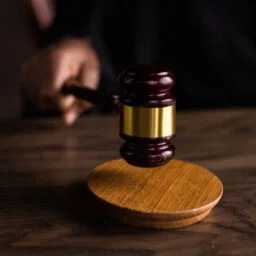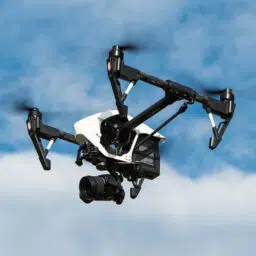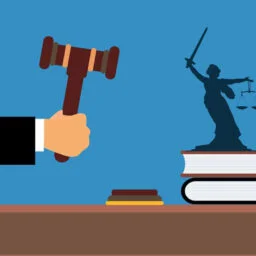INTRODUCTION
The recent death of Father Stan Swamy, an octogenarian Catholic priest, as an under-trial arrested under the Unlawful Activities (Prevention) Act, 1967 (hereinafter referred to as UAPA), has triggered off a fresh debate against the said legislation. This article is an attempt to analyse the different facets of UAPA and the controversy surrounding it.
BACKGROUND
In 1961, the then Prime Minister Jawaharlal Nehru set up a National Integration Council to recommend ways to combat the prevailing evils of communalism, regionalism, casteism, etc. to ensure national integration and matters incidental thereto.[1] The Unlawful Activities (Prevention) Bill was thus introduced in 1966, however, it lapsed consequent to the sharp objection it was made subject to in the Parliament. UAPA was then passed in 1967 after the introduction of a new bill, which was more or less similar to the previous bill, through the sixteenth amendment to the Constitution of India.[2] Unlawful Activities (Prevention) Act as it stood in 1967, before the subsequent amendments, gave the Government the power to label any organisation or association unlawful and criminalize “unlawful activities”.[3]
UAPA has been subjected to a series of amendments and with each Amendment Act, as will be explained in the latter part of the article; the Legislation has become more stringent.
VAGUE EXPRESSIONS
One of the concerning issues about UAPA is its dangerously vague provisions. Section 15[4] of the Act defines a “Terrorist Act” as “any act with intent to threaten or likely to threaten the unity, integrity, security or sovereignty of India or with intent to strike terror or likely to strike terror in the people or any section of the people in India or any foreign country.” As per this definition, the actual commission of the act is not necessary for it to be considered terrorist activity. The ambiguity of the said provision thus bestows arbitrary power on the State.
Further, Section 2(o) defines “unlawful activity” as any action which causes or is intended to cause disaffection against India including questioning the territorial integrity of India.[5] The term disaffection has a very wide connotation that can be and has been misused by the governments to stifle political dissent.
The statistics presented by the National Crime Records Bureau (NCRB) augment the concern over the vulnerability of UAPA to be misused. Between 2014 and 2016, as per the data, over 75% of cases registered under this Act have culminated either an acquittal or in discharge.[6] Bringing a more horrific picture to the surface is the statement made by the Minister of State for Home Affairs made in the Parliament, stating that out of a total of 5922 persons arrested under UAPA between 2016 to 2019, only 132 have been convicted i.e. a mere 2.2%.[7]
The Supreme Court in the case of Shreya Singhal v. Union of India[8] held that penal sections suffering from the vice of vagueness, rope in the innocents too. Such persons are not told clearly on which side of the line they fall; it would be open to the authorities to be as arbitrary and whimsical as they like in booking such persons under the said section. The Court further recognised how such over-broadness and vagueness result in the chilling effect of free speech guaranteed under Art. 19(1) (a).
UAPA, THROUGH THE YEARS
The 2004 Amendment: Terrorist Activities
This 1967 legislation was very rarely slapped on people as the Indian Parliament, with time, had enacted other preventive laws like the Maintenance of Internal Security Act, 1971 (MISA); National Security Act, 1980; Terrorist And Disruptive Activities (Prevention) Act, 1985 (TADA); Prevention of Terrorist Activities Act, 2002 (POTA). This, however, changed in the year 2004. TADA had lapsed in 1995 and its successor POTA was declared unconstitutional by the Supreme Court for reasons of misuse in the case of People’s Union for Civil Liberties & Anr. V/s Union of India[9] and was subsequently repealed in 2004. Before one could even say knife, the Parliament passed the UAPA Amendment Act, 2004[10], which inserted terror and related offences, earlier punishable under POTA, into the 1967 legislation. In its justification for the said action, the Central Government cited its commitments to Resolution 1373/2001, which was passed in the United Nations in response to the 9/11 terrorist attack in the USA to direct member nations to co-operate and help alleviate the threats to international peace and security caused by terrorist acts.[11] As a result of the foregoing course of action, UAPA, with the insertion of chapters pertaining to terrorist activities, became an “advanced adaptation” of the ex- legislations TADA and POTA.
THE 2008 AMENDMENT: INTRODUCTION OF STRINGENT BAIL PROVISIONS
The Statute underwent another amendment in 2008. The UAPA Amendment Act, 2008[12], inter alia, inserted Section 43-E[13] to the main legislation which read, “….the Court shall presume unless the contrary is shown, that the accused has committed such offence”. This provision is unusual because as per the dictates of the general principle of criminal law, the accused is presumed to be innocent unless proven guilty.
While Section 43-E makes UAPA a little prone to misuse, what makes it substantially malignant is Section 43 D (5). Just two days before his death, Stan Swamy had moved the Bombay High Court challenging Section 43 D (5) of the Unlawful Activities Prevention Act (UAPA) — a provision he termed “illusory”.[14]A bare reading of the provision indicates that a person accused under UAPA will not be granted bail if the Court after going through the case diary, report and other information produced by the investigating agency is satisfied that a “prima facie” case exists against the accused.[15]
Thus, Section 43-D (5) leaves little room for judicial scrutiny making it utterly prone to be misused by the investigating officers. The aforementioned anticipation was further strengthened by the 2019 case of NIA v. Zahoor Ahmad Shah Watali,[16] where the Supreme Court gave a narrow, literal interpretation to Section 43-D (5) to hold that the Courts must place sole reliance on the words of the investigating agency and see whether the allegations fit the offences. The resultant effects of the language of the Section that has been further validated by the SC in the Zahoor Ahmad case are prolonged detentions without trial and bails. As aptly described by Justice Aftab Alam, under Section 43-D (5) of UAPA, “the process itself becomes the punishment”.[17]
The cases of Father Stan Swamy who had been an under-trial for more than a year succumbed to Covid-19 in custody after his bail applications on medical grounds were repeatedly rejected;[18] Kanchan Nanaware, a 38-year-old woman who died in jail while awaiting trial in a UAPA case for over six years;[19] Surendra Gadling, an advocate arrested in the Bhim Koregaon case since 2018, could not go to her mother’s funeral rights as his presence was not felt necessary at the site by the Special NIA Court that rejected his bail application;[20]are just a few of the plethora of incidents of exploitation and the utter violation of the fundamental right to life and personal liberty[21], faced by the under-trials at the hand of the stringent bail provision of UAPA. As of 2019, over 95% of cases under UAPA are pending before various courts in India.[22]
Subsequent Amendments: Even more stringent than before
The series of amendments to UAPA did not come to an end in 2008. The government introduced fresh amendments in 2012 and more recently in 2019, th4e resultant effect of the latter being that now a person or organisation can be labelled a “Terrorist” without any prior hearing.[23]
CONCLUSION
The analysis of the aforementioned facets of UAPA reflects that the provisions of UAPA suffer from arbitrariness and vagueness. They cause a chilling effect on one’s fundamental rights to equality (in so far as the arbitrariness of the provisions is concerned); life and personal liberty; and freedom of speech and expression guaranteed under Articles 14, 21, and 19 (1)(a) of the Indian Constitution, respectively.
In my opinion, this legislation, being inherently violative of the fundamental rights forming the golden triangle must be declared unconstitutional and repealed. To say the least, the Zahoor Ahmad case must be overruled and the stringent provisions of UAPA must be given a liberally construed interpretation.
Author(s) Name: Sakshi Srivastav (Rajiv Gandhi National University of Law, Punjab)
References:
[1] Justice Anjana Prakash, ‘It Is Time for the Govt to Redeem Itself and Repeal UAPA’ (Live Law, 23 July 2021) <https://www.livelaw.in/columns/uapa-code-of-criminal-procedure-constitution-of-india-178035> accessed 14 August 2021.
[2] Nabeela Jamil, ‘The Expanding Confines of the UAPA Jurisprudence’ (Live Law, 15 July 2021) <https://www.livelaw.in/columns/uapa-jurisprudence-unlawful-activities-prevention-act-uapa-177481?infinitescroll=1> accessed 14 August 2021.
[3] Ibid.
[4] Unlawful Activities (Prevention) Act 1967, S. 15.
[5] Nabeela Jamil, ‘The Expanding Confines of the UAPA Jurisprudence’ (Live Law, 15 July 2021) <https://www.livelaw.in/columns/uapa-jurisprudence-unlawful-activities-prevention-act-uapa-177481?infinitescroll=1> accessed 14 August 2021.
[6] Ibid.
[7] Ibid.
[8] Shreya Singhal v Union of India, (2015) 5 S.C.C. 1.
[9] People’s Union for Civil Liberties & Anr. v/s Union of India, Writ Petition (civil) 389 of 2002
[10] Unlawful Activities (Prevention) Amendment Act 2004.
[11] Justice Anjana Prakash, ‘It Is Time For The Govt To Redeem Itself And Repeal UAPA’ (Live Law, 23 July 2021) <https://www.livelaw.in/columns/uapa-code-of-criminal-procedure-constitution-of-india-178035> accessed 14 August 2021.
[12] Unlawful Activities (Prevention) Amendment Act 2004.
[13] Unlawful Activities (Prevention) Act 1967, S. 43 E.
[14]Apurva Vishwanath, ‘Reading Section 43D(5): How it sets the bar for bail so high under UAPA’, The Indian Express (All India, 9 July 2021) < https://indianexpress.com/article/explained/section-43d5-how-it-sets-the-bar-for-bail-so-high-under-uapa-7390673/ > accessed 14 August 2021.
[15] Ibid, S. 43-D (5).
[16] NIA v. Zahoor Ahmad Shah Watali, (2019) 5 SCC 1
[17] Justice Aftab Alam, ‘A Performance Audit and Some Thoughts on UAPA’ (Live Law, 7 August 2021) <https://www.livelaw.in/columns/justice-aftab-alam-former-sc-judge-speech-for-democracy-dissent-and-draconian-law-uapa-and-sedition-webinar-by-cjar-hrda-livelaw-179093> accessed 15 August 2021.
[18] Sriram Lakshman, ‘‘Saddened’ by Father Stan Swamy’s death: U.S.’ The Hindu (All India, 8 August 2021) <https://www.thehindu.com/news/international/saddened-by-father-stan-swamys-death-us/article35204873.ece> accessed 15 August 2021.
[19] Manu Sebastain, ‘UAPA wrecking lives: What is the human cost?’ (Live Law, 10 July 2021) < https://www.livelaw.in/columns/uapa-wrecking-lives-what-is-the-human-cost-177234> accessed 15 August 2021.
[20] Ibid.
[21] The Constitution of India, Art. 21.
[22] Nabeela Jamil, ‘The Expanding Confines of the UAPA Jurisprudence’(Live Law, 15 July 2021) <https://www.livelaw.in/columns/uapa-jurisprudence-unlawful-activities-prevention-act-uapa-177481?infinitescroll=1> accessed 14 August 2021.
[23] Justice Aftab Alam, ‘A Performance Audit and Some Thoughts on UAPA’ (Live Law, 7 August 2021) <https://www.livelaw.in/columns/justice-aftab-alam-former-sc-judge-speech-for-democracy-dissent-and-draconian-law-uapa-and-sedition-webinar-by-cjar-hrda-livelaw-179093 > accessed 15 August 2021.
















